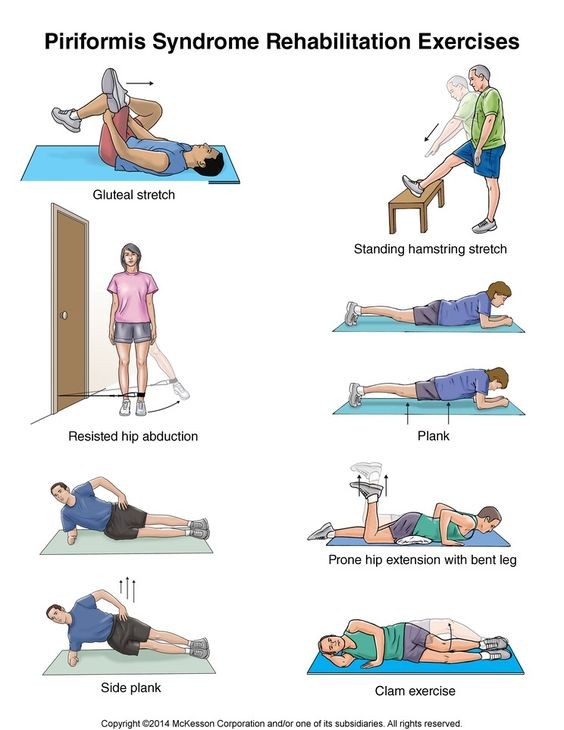
Contents
Piriformis Syndrome
Piriformis syndrome is a rare condition diagnosed in less than 200,000 people per year in the U.S. It typically begins with pain, tingling, or numbness in the back and/or buttock area, which can travel down the leg along the sciatic nerve and cause sciatic nerve pain. This syndrome is caused by compression of the sciatic nerve due to spasms or contracture of the piriformis muscle, a flat muscle located in the buttocks that stabilizes the hip joint and aids in hip movement. It is referred to as piriformis muscle syndrome as well. The piriformis muscle works in conjunction with the obturator externus muscle to move the lower pelvis backward.
Pseudo-sciatica, wallet sciatica, and hip socket neuropathy are alternate names for piriformis syndrome. It is often associated with repetitive actions related to sports, such as long-distance running, tennis, or traumatic injuries to the buttocks.
Causes of Piriformis Syndrome
Picture of the piriformis muscle
Piriformis syndrome is caused by the position of the sciatic nerve in relation to the piriformis muscle, as pressure on different areas of the nerve by spasms or swelling in the muscle can lead to symptoms.
Risk factors for piriformis syndrome may include inflammation (due to overuse or sprain), trauma (blunt trauma to the buttocks), hematoma, and scar formation. Individuals who develop issues in or near the piriformis muscles are also at risk of developing this syndrome.
Symptoms of Piriformis Syndrome
Early symptoms of piriformis syndrome often manifest in the buttocks and may include pain, numbness, tingling (like pins and needles), and low back pain (sacroiliac and/or sciatic pain). Advanced symptoms may involve pain extending down the sciatic nerve to the foot, severe buttock and leg pain, and leg muscle spasms. These symptoms are typically triggered by sitting, running, climbing stairs, or applying pressure to the piriformis muscle.
Is Piriformis Syndrome the Same as Sciatica and Low Back Pain?
Piriformis syndrome mimics the symptoms of sciatica and low back pain caused by other mechanisms, such as disc nerve entrapment (disc herniation).
Diagnosis of Piriformis Syndrome
The diagnosis and treatment of piriformis syndrome involve different doctors and health professionals, depending on the severity of symptoms and may require orthopedic, chiropractic, sports medicine, rehabilitation physicians, physical and occupational therapists, surgeons, or OB-GYN physicians if surgery or vaginal injection therapy is necessary. While there is no definitive test for piriformis syndrome, a patient’s history of trauma or overuse activity is often present. Physical examination includes palpation or movement of the piriformis muscle to evoke pain. Other tests are conducted to rule out other causes of sciatic nerve compression, such as herniated discs, back sprains, lumbosacral spondylolisthesis, and spinal stenosis.
X-rays can rule out bone fractures, while CT, MRI, and electromyography can help determine if symptoms are due to piriformis syndrome or other conditions.
Treatments for Piriformis Syndrome
Treatment for piriformis syndrome varies based on the phase of the condition: acute, recovery, or maintenance. During the acute phase, rest, physical therapy, occupational therapy, and certain medications are employed. Soft-tissue massage, cold packs, and electrical stimulation may be recommended. Surgery may be necessary in severe cases. Home remedies such as stretching and exercises, warm baths, cold packs, massage, yoga, and acupuncture can also provide relief. The prognosis depends on early diagnosis and treatment, while the recurrence of the syndrome can be prevented by stretching, flexibility training, and exercise.


